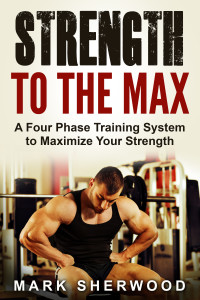 Before you read about how precision point training works, you may want to see A Visual Guide To Precision Point Training Concepts first. The Visual Guide contains videos that provide visual examples of what precision point training should look like when properly executed. I believe these examples contain the most practical information in regard to how to carry out your training if you choose to utilize precision point training concepts. A link that will take you directly to the visual guide is provided below:
Before you read about how precision point training works, you may want to see A Visual Guide To Precision Point Training Concepts first. The Visual Guide contains videos that provide visual examples of what precision point training should look like when properly executed. I believe these examples contain the most practical information in regard to how to carry out your training if you choose to utilize precision point training concepts. A link that will take you directly to the visual guide is provided below:
A Visual Guide To Precision Point Training Concepts
The Basics of PPT
The basics of PPT is divided into three sections. The first section explains How Your Body Works as this determines the rational basis for why Precision Point Training is designed the way it is. The second section which is titled, Understanding PPT, will help you understand the precision points and the necessary information for explaining how the training is actually done. In the third section you will find PPT Training Routines. You can go to any of the sections right now by clicking on the section desired just below this paragraph. However, I believe that you will understand the training concepts much better when you start at the first section first, which explains the basic principles of why the body responds to training the way it does. These concepts help you to see ahead and will keep you from being fooled by training strategies that are wonderfully effective for a while, but then quit working. Instead, you will understand how to use a form of training that works and keeps on working way past the point where most people get stuck in their training progress. Get ready for the truth about how your body works; you may be surprised.
How Your Body Works
Understanding PPT
Training Routines
How your Body Works
Your Body is Intelligent
 It shouldn’t be too hard to figure out that your body carries intelligence within it or your heart wouldn’t know when to beat, your muscles wouldn’t know how to grow, and your body wouldn’t know how to mature from a childhood size into an adult size. I believe God created our bodies so that they are smart enough to know how to function the way they do. One of the things the body knows how to do is to become stronger. In order to become stronger, it is helpful to know what makes your body want to become stronger and what doesn’t. If we understand how our bodies think about this, we will know how to train in agreement with how our bodies’ think in regard to becoming stronger. Let’s begin a journey that shows us how the human body thinks in regard to gaining strength.
It shouldn’t be too hard to figure out that your body carries intelligence within it or your heart wouldn’t know when to beat, your muscles wouldn’t know how to grow, and your body wouldn’t know how to mature from a childhood size into an adult size. I believe God created our bodies so that they are smart enough to know how to function the way they do. One of the things the body knows how to do is to become stronger. In order to become stronger, it is helpful to know what makes your body want to become stronger and what doesn’t. If we understand how our bodies think about this, we will know how to train in agreement with how our bodies’ think in regard to becoming stronger. Let’s begin a journey that shows us how the human body thinks in regard to gaining strength.
The path of least Resistance
Anytime you workout or exercise, your body will respond by taking the path of least resistance. This means your body will take the easiest path by attempting to adapt in order to make your workout easier the next time you do it. If the easiest path of adaptation for your body to follow is to become stronger, then your body will become stronger. If the easiest path of adaptation for your body to follow is to gain endurance, then your body will gain endurance. If the easiest path for your body to follow is to stay at the same strength level, then your body will stay at the same strength level. If the easiest path of adaptation for your body to follow is to become weaker, then your body will become weaker. Out of all of these possibilities, if our goal is to become stronger, then training must be done in such a way so that our bodies’ think that the best way to make a workout easier is to become stronger.
Your body wants to avoid a difficult path and would rather take an easier path. If we consider this in relationship to exercise, it means that hard exercise is a difficult path that your body does not like to take. Your body prefers an easier path and would like hard exercise to become easier. One way it can do this is by becoming stronger. Becoming stronger makes it easier to lift a given weight. For example, every time you become stronger, 100 pounds will become easier to lift. However, it is also possible to set up training conditions where becoming stronger will create a more difficult path by making exercise harder instead of easier. This is what happens when a person continuously trains as hard as they can by immediately increasing the amount of weight or reps as much as possible after they become stronger. In this case, the body eventually rebels against gaining strength because it wants an increase in strength to allow the exercise to become easier, but it keeps becoming harder. When this happens, the path of least resistance is to stop strength gains instead of producing them.
 The Primary Goal of your Body: Make Training Easier
The Primary Goal of your Body: Make Training Easier
If you understand the path of least resistance, you can see that the primary goal of your body in response to a workout is to make the workout easier. Correct training conditions will allow your body to accomplish this goal.
The Secondary Goal of your Body: Keep Training from Getting Harder
If you understand the path of least resistance, you will also understand that your body will see no benefit in becoming stronger if it always results in harder workouts. This is what happens when workouts always become harder (by adding more weight and reps) rather than easier as strength increases. Eventually the body will recognize that an increase in strength will lead to harder workouts and turn to its secondary goal, which is to stop you from becoming stronger in order stop you from making workouts harder by adding more weight, reps and sets.
Train in Agreement with the Primary Goal of Your Body
Precision Point Training is based on recognizing that in order to become progressively stronger, you are wise to train in agreement with the primary goal of your body in regard to why it would want to become stronger. This means that your training must utilize time periods where workouts become easier. Allowing workouts to become easier does not mean that they become easier by decreasing the amount of weight, or reps, or sets that you are using for exercises, rather it means that lifting the same amount of weight for the same amount of reps and sets will become easier as you become stronger. One of the goals of Precision Point Training is to make use of this principle when designing training strategies.
The Pattern That Kills Progress
 Training in contradiction to the goal of your body will eventually lead to the Pattern That Kills Progress, which is a dead end road. Trying to train harder and harder while your body wants hard training to become easier is the best way to kill your training progress. However, before the pattern that kills progress takes effect, a person must first reach their anabolic/adaptive zero point.
Training in contradiction to the goal of your body will eventually lead to the Pattern That Kills Progress, which is a dead end road. Trying to train harder and harder while your body wants hard training to become easier is the best way to kill your training progress. However, before the pattern that kills progress takes effect, a person must first reach their anabolic/adaptive zero point.
The Anabolic/Adaptive Zero Point and the Law of Supply and Demand
The anabolic/adaptive zero point is based on the law of supply and demand. An anabolic state occurs when the body’s supply of power to rebuild muscles is greater than the metabolic demand of a workout. The body overcompensates for the demand of the workout when it’s in an anabolic state in order to give a person added strength to make workouts easier. Most people generally have a built in anabolic reserve when they first begin training. This is because your body is made with reserves built in to it. For example, most people have more brain capacity, more heart capacity, more lung capacity, and more organ capacity than what is generally used unless they are pushed to use that reserve. When you engage in resistance training, your muscles are being pushed and your anabolic/adaptive reserve will be called upon to help you become stronger in order to lift a weight easier. However, as a person continues to train and become stronger, the anabolic/adaptive reserve is increasingly taxed and the ratio of supply to demand begins to change. The demand of metabolic depletion to the muscles becomes greater as strength and workloads increase, but the supply of anabolic/adaptive power to rebuild your muscles does not increase as much. Eventually the increasing demand of metabolic depletion will grow equal to the anabolic supply of replenishing power and leave the body with zero anabolic/adaptive reserve to overcompensate. When a person reaches this point, they have reached their anabolic/adaptive zero point, and trying to train harder will only lead to the Pattern That Kills Progress. In spite of consistent, disciplined training, gains will stop unless a person can create the precise training conditions for an anabolic response. The precise training conditions for an anabolic/adaptive response is one of the goals of Precision Point Training.
It is important to know that some people have a very high anabolic/adaptive zero point and will be able to gain a lot before they reach their anabolic/adaptive zero point. Most people have a medium anabolic/adaptive zero point that will enable a moderate gain in strength and muscle, and some have a low anabolic/adaptive zero point that will only enable small strength and muscle gains. However, whether a person has a high, medium, or low anabolic/adaptive zero point, trying to train harder no longer produces results when the anabolic/adaptive zero point is reached. A new training strategy is needed in order to start gaining again.
When the Light Bulb Goes On
 At this point in the reading, the light bulb as to how your body works may be coming on. If so, the concepts you have just read about are exploding within your mind as to how your body really works, even though these concepts may be different than what you have been previously taught. At some point, it is likely that you will encounter a mental battle because of the common training philosophies that run almost 180 degrees opposite to the Precision Point Training way of thinking. In addition, your own experiences may have taught you that training as hard as you can is highly effective. All of this can easily lead you to keep using popular training methods that start out working, only to quit working. So I must ask you, are you gaining right now? If not, you have nothing to lose by using Precision Point Training, but you may have to fight off various training deceptions and well-meaning advice from others in order to stick with it.
At this point in the reading, the light bulb as to how your body works may be coming on. If so, the concepts you have just read about are exploding within your mind as to how your body really works, even though these concepts may be different than what you have been previously taught. At some point, it is likely that you will encounter a mental battle because of the common training philosophies that run almost 180 degrees opposite to the Precision Point Training way of thinking. In addition, your own experiences may have taught you that training as hard as you can is highly effective. All of this can easily lead you to keep using popular training methods that start out working, only to quit working. So I must ask you, are you gaining right now? If not, you have nothing to lose by using Precision Point Training, but you may have to fight off various training deceptions and well-meaning advice from others in order to stick with it.
Training Deceptions
Training deceptions are generally built around the common phenomenon that occurs when a person experiences a season of progress that is a result of training harder and harder. These results occur before the anabolic/adaptive zero point is reached and cause a person to believe that harder and harder training is the best way to train because it has brought them up to the strength level they now possess. The problem is that their training quits working but they become fixated on the period of time when it did work. Those who have a high anabolic/adaptive zero point are especially deceiving because their strategy of harder and harder training has brought such great success that people will want to imitate them. However, their secret is not due to harder and harder training, rather it is due to a naturally high anabolic/adaptive zero point that others who imitate them don’t possess. Others are fooled by those take performance enhancing drugs. People try to imitate their training but can’t imitate their results without their drugs. Another deception can come from people who start training in their early teenage years and make consistent progress into their early twenties. It seems that training harder and harder was the key to many years of progress. While it is certain that training did help them get stronger, the fact that the person was naturally growing bigger and stronger during their adolescent years can make it appear that training harder and harder works longer and better than it really does. All of these scenarios can lead a person to believe that training harder and harder is the way to go because there is a time and a season where it seems to work so well. The problem is that it quits working when a person hits their anabolic/adaptive zero point.
The Dilemma
 There seems to be a dilemma in training when a person hits their anabolic/adaptive zero point. On the one hand, if a person attempts to train harder and heavier, it leads to the Pattern that Kills Progress. On the other hand, if a person tries to become stronger by allowing the same workout to become easier in order to train in agreement with their body, how can he or she ever progress to a more advanced workout? It seems that the training would eventually become too easy to cause the body to want to change.
There seems to be a dilemma in training when a person hits their anabolic/adaptive zero point. On the one hand, if a person attempts to train harder and heavier, it leads to the Pattern that Kills Progress. On the other hand, if a person tries to become stronger by allowing the same workout to become easier in order to train in agreement with their body, how can he or she ever progress to a more advanced workout? It seems that the training would eventually become too easy to cause the body to want to change.
The Solution: Avoid training too Hard or too Easy with Precision Point Training
The solution for avoiding training that is either too hard or too easy is Precision Point Training. Workouts will become easier, but it is important that they become easier in the right training state or difficulty level. Workouts also become harder, but only at an appropriate time, while in the right training state that is neither too hard nor too easy.
Understanding Precision Point Training
The Training Strategy and Training Routines
The Training Strategy for attaining the training state that will put you in the sweet spot for consistent strength gains is based on correctly diagnosing three basic precision points. These precision points will first be listed and then discussed one at a time. The three precision points consist of:
- Precision Point #1: The transition point
- Precision Point #2: The set limit
- Precision Point #3: Optimum training frequency
 Precision Point #1:
Precision Point #1:
The Transition Point: The Precise Stopping Point During a Set:
The training strategy for attaining the right training state during a set revolves around the transition point. The transition point is the dividing point between two training that states that consist of the positive training state and the negative training state. The positive training state is an easier state to train in and is generally the training state that a person will be in at the start of a set. If a person progressively advances farther into a set of an exercise, they will eventually transition into a negative training state where reps suddenly become progressively harder to a greater extent than previous. To understand how to find the transition point, a person must first understand the difference between a positive state strong rep, and a negative state weak rep.
Strong Reps (positive state) and Weak Reps (negative state)
Strong reps that are done in a positive training state are reps that can be done when a person has enough strength available to perform their reps with near maximum rep speed with an even rep rhythm using good form. The first rep of a set will usually determine what maximum rep speed is for a given weight. As long as rep speed is similar to the speed of the first rep, it is considered maximum rep speed for the weight being used. On the other hand, weak reps occur when rep speed or rep rhythm begins to slow down during a set. They are a product of a negative training state because a set has been pushed to the point where fatigue begins to have a negative effect on rep speed and rep rhythm. In spite of trying to lift with maximum force, the fatigue will not permit weak reps to be done with maximum rep speed. Weak reps will feel both slower and weaker than strong reps. When observing a set of an exercise, identifying the transition from strong reps to weak reps will help you to identify the transition point between the positive training state and the negative training state.
The Limit Rep and Marker Rep
When a person is doing a set, they will be able to maintain an even rep rhythm and near maximum rep speed until they reach the last strong rep. The last rep that that they can do using an even rep rhythm at near maximum rep speed is what I refer to as the limit rep. The limit rep identifies the limit of strong reps that can be done in a positive training state during a set of an exercise. If a lifter continues past this point, fatigue will cause a decrease of rep speed and rep rhythm on his or her next rep, which indicates a transition into a negative training state. This rep is called the marker rep as it marks the first weak rep of a set, and it marks the initial transition into a negative training state. Whereas many training methods advocate pushing a set way past the marker rep, Precision Point Training revolves around the transition point by using either the marker rep or the limit rep as a stopping point during a set.
Identifying the Marker Rep
 Since the Marker rep is a very important part of Precision Point Training, it is important to be able to identify it with accuracy. In addition to the rep speed slowing down when a person reaches their marker rep, there are some other indicators that all converge at the same time when the marker rep is being done. These indicators occur suddenly to a greater degree than previously in the set and include:
Since the Marker rep is a very important part of Precision Point Training, it is important to be able to identify it with accuracy. In addition to the rep speed slowing down when a person reaches their marker rep, there are some other indicators that all converge at the same time when the marker rep is being done. These indicators occur suddenly to a greater degree than previously in the set and include:
- The tendency for a longer pause between reps right before doing the Marker rep.
- The feeling that the reps are suddenly becoming more difficult.
- The body will tighten up more, especially the midsection.
- The tendency to want to hold your breath instead of easily exhaling when the weight is being lifted.
Marker Rep Transition Training
When using Precision Point Training, a lifter allows the same workouts to be repeated until the workouts transition into easier workouts due to a strength gain. To start with, this is done by stopping a set at the marker rep in a slightly negative training state. However, the body knows that the positive training state is easier and it can accomplish its goal of making training easier if it can transition from a slightly negative training state into a positive training state. It can easily do this by becoming stronger so that the marker rep that is done in a slightly negative state, will transition into a rep that is easy enough to do as a limit rep in a positive state. You will know when your body has become stronger because the marker rep will no longer be a slower rep. The increase in strength will enable you to transition from marker rep speed (which is slower), to limit rep speed (which is faster) on your last rep. In other words, you will be able to do your whole set with the same rep rhythm without ever slowing down on the last rep. Each time this happens, you have used marker rep transition training to gain strength. This transition means that the limit of your positive training state moves to a higher level while moving your transition point to a higher point of strength. All of this will be possible if you know how to stop at your marker rep until it becomes easier.
A Strong Lifting Motion
If you are doing heavy single rep training, there is no marker rep because you are only doing one rep. In this case, you have a marker weight, which is the weight that causes a strong lifting motion to become a weak lifting motion. A strong lifting motion is identified by two things, first, you must be able to perform a smooth, non stop lifting motion without any pausing or slowing down during the motion of the single rep; second you can use excellent lifting form. A weak lifting motion occurs when you reach a weight where you can no longer use a smooth nonstop lifting motion for a single rep, and you end up grinding, and pausing at various points during the lift.
The Single Rep Training Max
The heaviest weight that you can use while maintaining a strong lifting motion is your single rep training max. I advise using your training max when training with heavy singles. If you gain strength and can add five pounds while maintaining a strong lifting motion, then you have made a transition from one weight while using a strong lifting motion to a heavier weight with a strong lifting motion.
Progression: When to Add on Weight
Once your body has become strong enough to transition to a new training max, or your marker rep transitions into a limit rep, give it some time enjoy the easier workout. You will eventually increase the weight by 2 to 5 pounds. If you are training correctly, your body can usually adapt to the marker rep or training max by becoming stronger within one to four weeks. Beginners who are training correctly can generally adapt quickly and may need only one or two weeks before increasing the weight again. People who have more than a couple years of training experience will take longer to adapt because they generally have less anabolic reserve and are closer to their anabolic zero point. It may take them up to four weeks before their marker rep becomes easier, but they are wise to give themselves another three or four weeks before increasing the weight, or they may run into the Pattern That Kills Progress which occurs when an increase in strength is immediately followed by workouts becoming harder. This means a total of six to eight weeks may be needed before a person adds on weight if they have already been training for a few years.
Sometimes it is hard to add on two to five pounds because the weight intervals of an exercise machine or barbell plate may by sized so that you must add ten pounds to an exercise. I believe this makes progression difficult. If you go online, you can often find some very light barbell plates that will allow you to add on a reasonable amount of weight (two to five pounds) in order to make progress. However, if you don’t have this option, you can add on a rep to your set instead of adding on weight. The added rep will become a marker rep which will eventually transition into a limit rep. After the transition has occurred, you can progress by adding on weight and reducing your reps by one to the original number of reps that you had been doing. This progression process can then be repeated. However, I must give fair warning; the stronger you become, and the heavier weights that you use, the harder it becomes to progress by adding on a rep.
 Precision Point #2:
Precision Point #2:
The Limit Set for Determining How many Sets to Perform
The limit set shows you when to stop doing sets of an exercise. You can either be in a positive training state when doing sets, or a negative training state when doing sets. Positive state sets refer to being at full strength while doing a set. This can be determined by knowing how many strong reps you can do before fatigue has a negative effect on your set and causes the number of strong reps that you can do to decrease. You can determine this by remembering how many strong reps you did for the first set of an exercise before fatigue has developed to cause strength and the marker rep number to decrease. To give an example of this, we will imagine that a lifter reaches his marker rep on his 8th rep while doing his first set of the bench press. After a sufficient rest of at least three minutes between sets of the bench press (although other exercises that don’t affect bench press strength can be done during this time) the lifter finds that his marker rep still occurs on his 8th rep when doing his 2nd and 3rd sets. However, on his fourth set, his marker rep occurs when doing his 7th rep instead of his 8th. A lower rep number indicates a decrease in strength and a negative training state because fatigue is causing a negative effect on the lifter’s strength. The lifter repeatedly finds over the course of several workouts that his limit for positive state sets is 3 sets. Because of this, he knows to do three sets of an exercise. His 4th set is a marker set as it marks a negative training state. Once he knows this, no marker sets in a negative state are done because a marker set is generally non-productive.
It is possible that a given lifter can only do one set in a positive training state, but another lifter may be able to do two, three, four, or even more positive state sets. Each lifter must find out for themselves how many sets he or she can do in a positive training state.
 Precision Point #3: Optimum Training Frequency
Precision Point #3: Optimum Training Frequency
Training frequency refers to how often you train and can be highly variable from one person to another. It can also be highly variable in regard to the same person depending on how hard they train, how heavy they train, how long they train, and what kind of physical condition they are already in. When considering recovery, keep in mind that Precision Point Training workouts are terminated before fatigue causes a decrease in strength during a workout. There may be some people who can train for a substantial amount of time before their strength is compromised, but most will find that workouts are not long or draining when exercising within a positive training state. This will make recovery faster and easier than other methods of training that are based on thoroughly working a muscle until it is fatigued. I say this to help you accept the possibility that you may be able to work out more often than most training methods would advocate, yet still recover. With this in mind, let’s consider how to find the right training frequency.
Using the 3-4-5 Method or the 3-2-1- Method
Both the 3-4-5- method and the 3-2-1- method are used for finding training frequency. In order to find the right raining frequency, the first step of both methods is to have a lifter train each body part 3 times per week, which basically means training each body part every other day. If consistent progress is made by training three times per week, a person can simply continue training each body part three times per week. However, if a person is performing the right number of sets and reps in a positive training state, and their workouts do not feel as though they are becoming easier within a few weeks, the culprit for lack of progress is often the training frequency. If this is the case, a lifter can move to the next step of the 3-4-5 method by working each body part 4 times per week, and even 5 times per week to compare the results until he or she finds a training frequency that produces progress. If a lifter starts out training each body part three times per week and feels that they are not recovering from their workouts, they can go the other direction and use the 3-2-1 method in which they experiment with training each body part with either 2 workouts, or 1 workout per week to see if it helps training progress.
Short Term Responses and Long Term Responses
Finding the right training frequency can be deceiving at times because an increase or decrease in training frequency can produce a temporary increase in strength that is followed by a long term lack of progress, and even a loss of strength. The opposite is true as well because an increase or decrease in training frequency can cause a temporary loss of strength followed by a consistent long term increase of strength. If you feel weaker after a couple of days on a new training frequency, don’t immediately throw it out. Instead, give yourself at least two weeks when trying out a new training frequency and if it doesn’t work, throw it out and try a different training frequency. If it does work, keep a close eye on your progress for the next three or four weeks; especially when reducing frequency because when tapering back the amount of work you are doing, the body will often gain some temporary strength and then stop gaining. Don’t be afraid to make adjustments if something is not working, but your adjustments should not be random changes that won’t help you figure out a consistent training frequency that works.
It is also important to consider which exercise you are doing when experimenting with training frequency. Some exercises such as the squat and deadlift are very demanding and more difficult to recover from. Because of this, you may find that these exercises require a different training frequency than other exercises. Don’t be afraid to vary your training frequency according to the exercise you do.
Whole Body Workouts vs. Separate Workouts of Separate Body Parts
There is no rule that mandates a person choose between using whole body workouts or split routines where separate workouts are done for separate body parts. Since Precision Point workouts are designed to avoid fatigue, the workouts are not severe and tend to be fairly brief. This makes it an easy to train your whole body in a single workout. However, lifters who want to use a split routine to train different body parts in different workouts can do so.
Exercise Selection
 If you truly want to become stronger, do exercises that allow you to use your strongest muscles that can lift the most weight. Your biggest, strongest muscles are your leg and gluteal muscles, your chest muscles, and your back muscles. If you train these muscles with basic compound exercises such as the squat and its variations, the bench press and its variations, and rowing and pulling motion variations, the arm and shoulder muscles will be strongly engaged as they must assist with these exercises, and the core muscles will be engaged in supporting your torso when doing most types of squats and deadlifts. For this reason, you can build a great deal of strength without doing exercises that directly work the smaller muscles. Nonetheless, you may prefer to include individual exercises that train the smaller body parts such as the arm, shoulder, and calf muscles. However, it is generally best to train the smaller muscles after training the larger muscles. If you train your bigger muscles first, your smaller muscles will already be partially fatigued from being actively engaged in assisting the bigger muscles. For this reason, even less sets are required for an exercise that directly utilizes the smaller muscles. I say this as a word of caution as it is easy to over-train the smaller body parts.
If you truly want to become stronger, do exercises that allow you to use your strongest muscles that can lift the most weight. Your biggest, strongest muscles are your leg and gluteal muscles, your chest muscles, and your back muscles. If you train these muscles with basic compound exercises such as the squat and its variations, the bench press and its variations, and rowing and pulling motion variations, the arm and shoulder muscles will be strongly engaged as they must assist with these exercises, and the core muscles will be engaged in supporting your torso when doing most types of squats and deadlifts. For this reason, you can build a great deal of strength without doing exercises that directly work the smaller muscles. Nonetheless, you may prefer to include individual exercises that train the smaller body parts such as the arm, shoulder, and calf muscles. However, it is generally best to train the smaller muscles after training the larger muscles. If you train your bigger muscles first, your smaller muscles will already be partially fatigued from being actively engaged in assisting the bigger muscles. For this reason, even less sets are required for an exercise that directly utilizes the smaller muscles. I say this as a word of caution as it is easy to over-train the smaller body parts.
One exercise for each of the biggest muscle groups is enough if you prefer to keep workouts simple. This means you can get by on three basic exercises that cover the biggest body parts within a single workout. However, if you like variety, more than one exercise per muscle group can be used, as long as you stay in a positive training state. This means if you have found that the limit of your positive training state is two or three sets for a body part, then you can do two or three exercises for that body part, but only one set will be done for each of the exercises. Don’t mistakenly think that you should do two or three sets for each exercise when doing multiple exercises for the same body part, as this would mean you are doing double or triple the amount of sets that you can actually perform within a positive training state.
Weight Selection
 When considering the amount of weight to use, I recommend a variety of weights. Doing sets where you reach your marker rep between 3 to 8 reps will focus more on strength and muscle fiber size, while the 9-15 rep range will help build muscle, strength and anaerobic endurance. The 9-15 rep range will also tend to give you more of a pump and enhance your capillary development; especially as you get closer to the twelve to fifteen rep range. You can also use weights that allow only one or two reps, but I advise having a spotter present and avoiding near maximum poundages if you are proned to injuries or are experiencing problems in your joints of muscles. You can gain strength without trying for a max. I personally advocate using both the 3-8 rep range and the 9-15 rep range when doing an exercise. Even if you are mostly concerned with building strength, building some muscle mass will help you become stronger in the long run. Since different people are different in regard to how many sets they can do while in a positive training state, I recommend doing a heavier set with lower reps first, followed by a lighter set with more reps for people who can do two positive state sets. For people who can do three or more sets while staying in a positive training state, I recommend starting with heavier sets and finishing with one set at a lighter weight that allows more reps. I have found one set in the 12-15 rep range to be beneficial for a given exercise, but two or more sets in the 12-15 rep range will start to backfire if you do it too often.
When considering the amount of weight to use, I recommend a variety of weights. Doing sets where you reach your marker rep between 3 to 8 reps will focus more on strength and muscle fiber size, while the 9-15 rep range will help build muscle, strength and anaerobic endurance. The 9-15 rep range will also tend to give you more of a pump and enhance your capillary development; especially as you get closer to the twelve to fifteen rep range. You can also use weights that allow only one or two reps, but I advise having a spotter present and avoiding near maximum poundages if you are proned to injuries or are experiencing problems in your joints of muscles. You can gain strength without trying for a max. I personally advocate using both the 3-8 rep range and the 9-15 rep range when doing an exercise. Even if you are mostly concerned with building strength, building some muscle mass will help you become stronger in the long run. Since different people are different in regard to how many sets they can do while in a positive training state, I recommend doing a heavier set with lower reps first, followed by a lighter set with more reps for people who can do two positive state sets. For people who can do three or more sets while staying in a positive training state, I recommend starting with heavier sets and finishing with one set at a lighter weight that allows more reps. I have found one set in the 12-15 rep range to be beneficial for a given exercise, but two or more sets in the 12-15 rep range will start to backfire if you do it too often.
Final Comments
Precision Point Training is a form a training that requires patience and discipline in regard to sticking with precise training details more than it requires discipline in regard to continually pushing yourself. To do this means that you will stop your set at the right point, rather than to push for extra reps to gratify your ego. This can be hard; especially if everyone else around you is pushing out more reps than you are, and you know that you could catch up with them by pushing past a marker rep or limit rep. It’s possible that people will harass you and believe you are wimping out because you don’t seem to be pushing your training hard enough, but remember that training smarter and better will work better than training harder.
You may also give in to the idea of shocking your body by training extra hard and perhaps make a quick gain, but if you keep it up, you will eventually fall into the pattern that kills progress. Precision Point Training requires a steady work mentality rather than a lottery mentality where you hit the jackpot and find the magic shortcut that rockets you up to the top of the strength mountain. In the long run, you are likely to find more success if you have a well thought out Precision Point plan, and stick with it with steady consistent training.
If you have not yet read the first section on the principles that explain how your body works, Precision Point Training will make a lot more sense after you read the first section. To go back to the section on How your Body Works, click here.
 Examples of Precision Point Training
Examples of Precision Point Training
What do the following terms on the workout template mean?
Conventional notation that is used for writing strength training routines will often merely show the exercises, the amount of sets, and the amount of reps. I believe this to be horribly lacking in regard to communicating necessary details of helping a lifter to workout within their strength training zone. For this reason, there are some additional terms and notation on the workout templates that must be understood in order read the workout routines that are listed. These terms and notations are explained below.
M = Mark Rep
M stands for Marker rep. When doing a set of an exercise, continue doing reps only as long as you can push or pull with full force. When you reach a rep where your rep speed and rep rhythm start to slow down, and the exercise suddenly starts to feel harder, you have reached your marker rep and should stop doing reps. If you reach your marker rep on your 8th rep, it would be written as 8M
L = Limit Rep
L stands for Limit Rep. Your limit rep is the last rep that you can perform using an even rep rhythm before having to slow down your rep speed and rep rhythm during a set of an exercise. It is the rep that occurs immediately before your marker rep. If you reach your limit rep on your 8th rep, it would be written as 8L
8M to 8L
Using 8 reps as an example, (although the concept works the same with any rep amount), the notation 8M to 8L refers to marker rep transition training which begins by training with a weight that will allow you reach your marker rep on your 8th rep, or the rep number specified. Workouts are then repeated using the same weight for 8 reps until the marker rep that occurs on your 8th rep transitions into a rep that is easy enough to do as a limit rep. You will know when this occurs because your 8th rep will be lifted faster and easier. After you have made this transition for at least a week, you can add two to five pounds to your exercises and continue to do 8 reps with the added weight.
Stop at Your Limit set
When you see the term, Stop at Your Limit Set, it means you can continue to repeat sets of an exercise as long as you are as strong as you were on your first set. When strength decreases, stop. The last set that you can do at the same strength level as your first set is called your limit set as it is the limit of sets that you should do for an exercise. When experimenting to find your limit set, if you reach your marker rep at a lower rep number than your first set, your strength has decreased and you have gone past your limit set. Once you have experimented to find your limit set, do not go past your limit set in future workouts.
Remember to use basic compound exercises, or variations of the basic exercises for each body part, and use the 3-4-5 method or the 3-2-1 method for determining training frequency.
Too Simple to Work?
 If I were to judge the routines that are listed by simply looking at the amount of sets and reps, I might think the routines are way too simple to work. But remember, it’s how you do them that makes them work! Just doing a checklist of exercises for sets of 8 reps (or any other number of reps and sets) will get you nowhere unless you apply those sets of 8 with precision. This means consistently attaining the precise workout state and patiently giving your body time to become stronger. This is what works and keeps on working. Best of training to you.
If I were to judge the routines that are listed by simply looking at the amount of sets and reps, I might think the routines are way too simple to work. But remember, it’s how you do them that makes them work! Just doing a checklist of exercises for sets of 8 reps (or any other number of reps and sets) will get you nowhere unless you apply those sets of 8 with precision. This means consistently attaining the precise workout state and patiently giving your body time to become stronger. This is what works and keeps on working. Best of training to you.
PPT Strength Training Routines
8 Reps Routine
Body Part Exercised How Many Sets Number of Reps
Legs Stop at your limit set 8M-8L
Back Stop at your limit set 8M-8L
Chest Stop at your limit set 8M-8L
To understand what the terms: “Limit Set” and “8M-8L” mean, please click on What do the following terms on the workout template mean?
For gaining strength, exercising the legs, back and chest is a must, as these are the biggest strongest muscles. However, the smaller muscles such as the shoulders, triceps and biceps will also be strongly worked if you are doing compound exercises for legs, back and chest. If you want to do exercises that specifically emphasize the shoulders, triceps, biceps, plus abs and calves more directly, additional exercises can be done for them if desired. I am referring to these additional exercises as assistance exercises because they strengthen the smaller body parts that assist with helping you improve your lifts for the bigger muscle groups such as the chest and back. However, these exercises should always be done after exercising the legs, back and chest muscles, unless overhead lifts are top priority for you, in which case you can do them for shoulders first.
Assistance Exercises if Desired
| Body Part Exercised | How Many Sets | Number of Reps |
| Shoulders | Stop at Your Limit Set | 8M-8L |
| Triceps | Stop at Your Limit Set | 8M-8L |
| Biceps | Stop at Your Limit Set | 8M-8L |
| Calf muscle | Stop at Your Limit Set | 8M-8L |
| Abdominals | Stop at Your Limit Set | Use a comfortable rep range |
One Week Training Cycle Routine
| Body Part Exercised | How Many Sets | Number of Reps |
| Legs | Stop at your limit set | Day 1: 15M-15L Day 2: 12M-12L Day 3: 8M-8L Day 4: 6M-6L |
| Back | Stop at your limit set | Day 1: 15M-15L Day 2: 12M-12L Day 3: 8M-8L Day 4: 6M-6L |
| Chest | Stop at your limit set | Day 1: 15M-15L Day 2: 12M-12L Day 3: 8M-8L Day 4: 6M-6L |
| Assistance Exercises as desired | Stop at your limit set | Day 1: 15M-15L Day 2: 12M-12L Day 3: 8M-8L Day 4: 6M-6L |
To understand what the terms: “Limit Set” and “8M-8L” mean, please click on What do the following terms on the workout template mean?
If you work out more than three days per week, you may repeat any of the workout days to arrive at the number of workout days per week desired.
8-6-4 Routine in a 3 week Cycle
Body Part Exercised How Many Sets Number of Reps
Legs Stop at your limit set Week 1: 8M-8L
Week 2: 6M-6L
Week 3: 4M-4L
Back Stop at your limit set Week 1: 8M-8L
Week 2: 6M-6L
Week 3: 4M-4L
Chest Stop at your limit set Week 1: 8M-8L
Week 2: 6M-6L
Week 3: 4M-4L
Assistance Exercises as desired Stop at your limit set Week 1: 8M-8L
Week 2: 6M-6L
Week 3: 4M-4L
To understand what the terms: “Limit Set” and “8M-8L” mean, please click on What do the following terms on the workout template mean?
In the 3 week cycle, the same number of reps are used for an entire week. During the next two weeks, the number of reps are changed to the reps listed for week 2 and week 3. I personally like the one week cycle better where reps are changed throughout the week, but others may prefer this three week cycle.
To go to the start of a section, click on the section you would like to go to.


